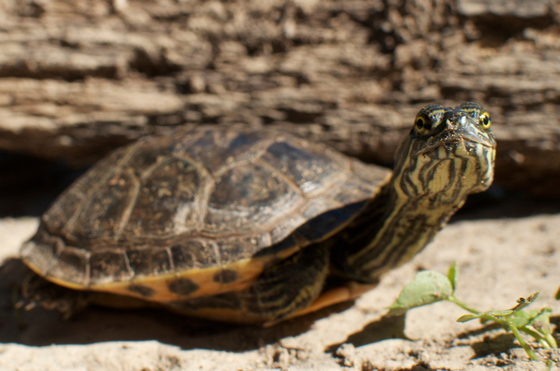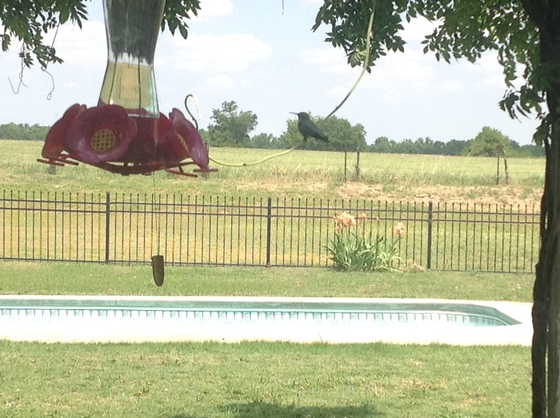An Introduction to the World of Dragonflies and Damselflies
Greg Lasley, a skilled nature enthusiast, has spent years in
the field observing and learning about dragonflies and damselflies (collectively
known as odonates). He recently provided an introduction to these winged
warriors during the Red Slough Birding Convention.
Get the basics on dragonflies and damselflies
Species Spotlight: Goatweed Leafwing
When perched, the goatweed leafwing butterfly folds its
wings and is camouflaged in shades of browns and is shaped like a dead leaf. It
may be easily overlooked; until it opens its wings and reveals a striking
reddish-orange back. These butterflies earn their unusual name from their host
plant of goatweed, also known as wooly croton.
Learn more about this butterfly

Wading through Wetlands for Western Chicken Turtles
An unusual turtle with an unusual name, the western chicken turtle can be found in southeastern Oklahoma where it spends most of its time sunning near small wetlands. To learn more about where these turtles live, the Wildlife Department teamed up with researchers from Missouri State University for a four-year search in a three-county area
of the Muddy Boggy and Clear Boggy creek drainages.
Find out what these turtles need to survive
Banding the Woodpeckers of the Wilderness Area
Banding efforts are underway on the McCurtain County
Wilderness Area! Biologists have just a few weeks to capture red-cockaded
woodpecker chicks in their hidden nests and attach unique identification bands
to their legs. Before handling the chicks, biologists coat their hands in corn
starch so that oils from their skin aren’t transferred to the mostly naked
chicks. So far, 15 chicks have been banded and returned to their nest cavity.
Four Wildscapes Certified
Information about landscaping for wildlife, and how to certify your property as a Wildscape can be found at wildlifedepartment.com.
- Larry & Patti Johnston, Logan County: Wildlife Habitat #477
This Wildscape focused on specific birds, frogs, butterflies and native bees. Their water habitat element is provided by a fish pond that includes a 60-foot stream. When asked what animals use their water source, the response was, "Cats, raccoons, possums and who knows what!"
- Steve & Teresa Blue, Tulsa County: Wildlife Habitat #478
This Wildscape created two urban prairie gardens to attract butterflies.
- Jeff Tibbits, Logan County: Wildlife Habitat #479
This Wildscape includes a shrub layer made up of sumac, coralberry, and yaupon holly under the trees to provide both food and cover.
- Jacquelyn S. Southern, Logan County: Wildlife Habitat #480
 The homeowner enjoys watching the hummingbirds visit her Wildscape. The pool in the background attracts a pair of mallards that bring their ducklings for a swim.
|